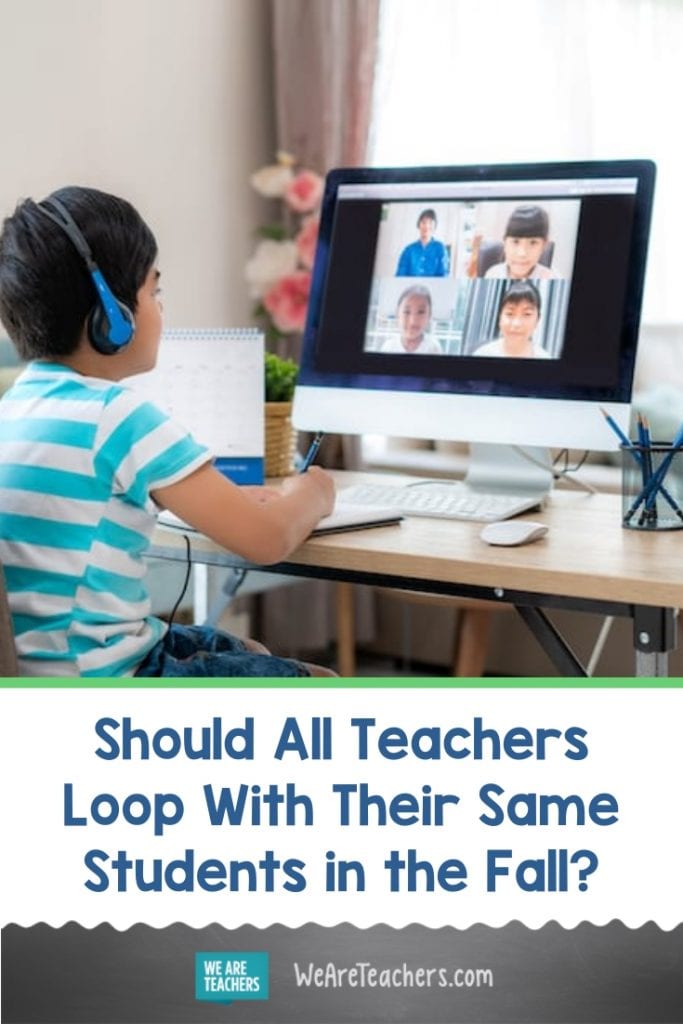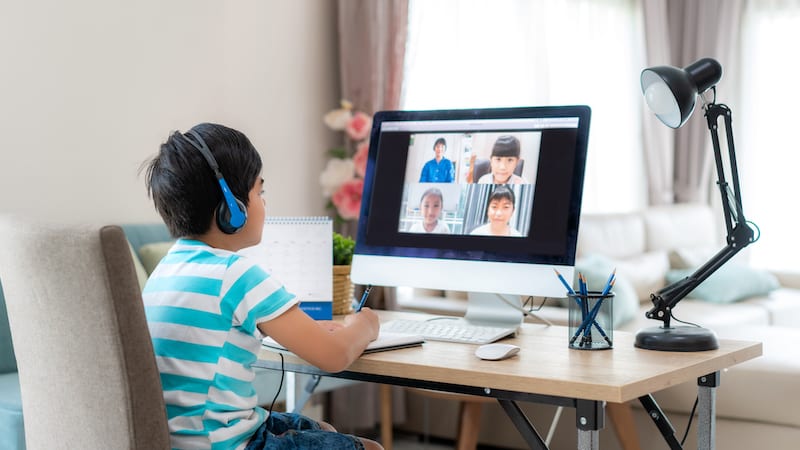There’s nothing quite like that first day of school anxiety—getting to know a fresh set of 30 eager (or perhaps not so eager) faces, personalities, quirks, and learning styles. It takes months to fully acquaint ourselves with our new students. And that’s when we had the luxury of working with them in person. Now, as we face a variety of potential scenarios in the fall due to COVID-19, the back to school angst brings even more uncertainty. How can we possibly connect with 30 new students via Zoom calls and virtual platforms? Some districts are considering a unique solution called “looping” that assigns students to the same teacher they had last year. Here are some of the benefits of looping students may solve the virtual learning headaches and close educational gaps.
Students know (and usually love) their last teacher.
Familiarity in times of uncertainty is a must. And it’s not news that a young student’s teacher is one of their main sources of support and comfort at all times, not just through a pandemic. Removing one of those support people can have devastating effects on a child, especially in the K-2 age range. Lori Jackson is an educational psychologist and co-founder of the Connections Model of social-emotional learning with 15 years of experience working with students and families. She hopes schools seriously consider the benefits of looping.
“Teachers do more than just teach … the connection between teacher and student forms the foundation from which learning takes place. During an uncertain time, this bond is even more important as it keeps some sense of normalcy during an abnormal event,” she said. “The bond has kept learning going even more than the technology that has connected us.”
Jackson worries that attempting to form this bond virtually in the fall will be more difficult, but maintaining an already-formed bond is more doable. She thinks looping could be a “game-changer” for both kids and teachers.
[contextly_auto_sidebar]
Young readers need consistency.
Looping is often considered most helpful in younger grades. Here, students are more reliant on the comfortable bond of an educator they know well. Also, this is the time when students learn to read, a vital skill that many have been missing during the pandemic as sometimes the teacher is the only adult reading with the child without support at home. Looping could prove to be a helpful solution to preventing learning gaps in a child’s reading education.
Urban Literacy Specialist Kathryn Starke consults with school administrators on best practices. “In several schools, we recommended that looping in the primary grades would be most beneficial for children who are expecting to return to their ‘old class’ in their mind,” she said. “The primary grades are also the building blocks for the foundation of reading.”
Teachers know their students … and their gaps. By allowing looping, these teachers can pick up after the summer with better consistency and an understanding where a child left off in their reading education.
It improves test scores—pandemic or no pandemic.
In 2018 education experts turned their attention to a study that demonstrated greater gains among young students who were “looped,” with a particularly notable improvement for students of color.
The study examined 3rd through 5th graders who were looped for two years in small groups rather than as a whole class. While the scores only increased by one percentage point, it was still a notable increase according to the researchers. And admins took notice as they considered how to raise scores in these grade levels. Of course, we have no idea if these measures will even be around in the future. Many states skipped testing altogether during the pandemic.
There is no wasted time.
What if you could just skip those pesky ice breakers? Avoid learning a new list of names and faces? Skip the get to know you games (two truths and a lie, anyone!)?
This is one of the key benefits of looping, according to a teacher who has tried it. JoAnn Nocera, supervisor of Instruction for the past six years in the Toms River Regional School District in New Jersey, spent one year looping. She taught a group of second grade students and then those same students in third grade. While the circumstances weren’t quite the same (less one pandemic of course) she found it to be beneficial.
“The elimination of ‘getting to know you’ was refreshing and we dove right into the curriculum and added creative activities because I knew their learning styles, personalities and competencies,” she said. “In addition, I was able to have the time to address the needs of my students and dive deeper into the curriculum having had a past knowledge of their strengths academically, socially and emotionally …”.
Teachers may find this more intense depth of curriculum beneficial in narrowing the learning gap caused by extenuating circumstances during virtual learning.
And a few cons …
Every teacher, at this point, is thinking, “Yeah that’s great, except for students who don’t get along well with you. They have to stay another year?” The experts consider having exceptions to the looping rule, but to handle this on a case-by-case basis if looping is best for the whole group. There’s no reason to dismiss the idea for one student.
Certifications can also be an issue. Some teachers aren’t certified to teach the grade level of their second looped year. Admins might need to work out logistical issues with the staff, but in the primary grades most teachers have a multi-grade level certification.
And, some teachers may be concerned with having to learn an entirely new curriculum over the summer. This may require professional development and access to resources.
If your district is considering the benefits of looping, here are some questions you should be asking:
Nocera recommends the following considerations when implementing looping effectively:
- Are the classrooms balanced by gender, abilities, needs, culture, race and linguistic ability? This should be a priority.
- Is the teacher ready to loop? If the teacher isn’t ready or doesn’t have the motivation to loop there will be limited success in doing so.
- Are there any personality conflicts between the teacher and some of his/her students? Consider removing that child from the classroom because it will impact their learning throughout the year.
- Can the district provide professional development to ensure that the next grade level curriculum is delivered with ease and knowledge? This will help teachers feel more comfortable.
She also recommends checking out The Looping Handbook by Jim Grant, Bob Johnson, and Irv Richardson.
How do you feel about looping? Do you see any other benefits of looping? Share on our WeAreTeachers HELPLINE.
Also, Could Students Return to a Two-Day School Week?


